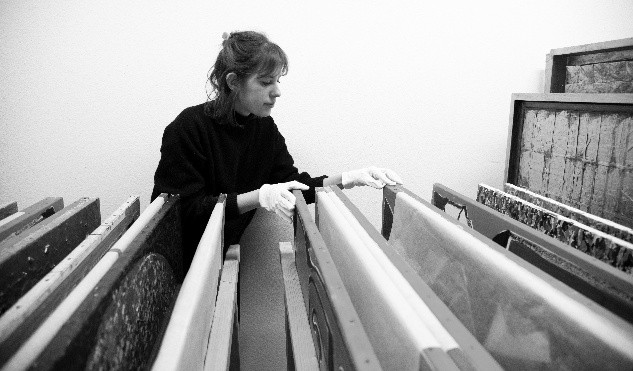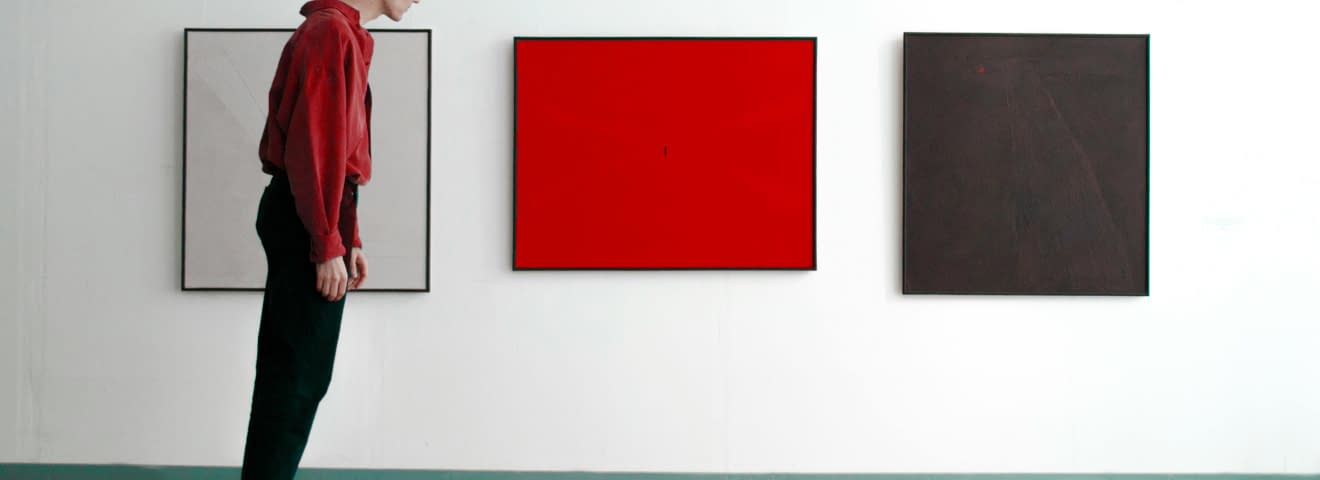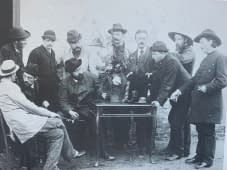Tips for Storing and Caring for Works of Art: A Guide for Art Buyers and Owners
Buying a work of art is an exciting moment for any art lover, whether an experienced collector or a first-time buyer. Acquiring a work of art is not only an emotional decision, but can also be an investment. Every art buyer and every art owner wants the works in their collection to be preserved in the best possible way in the long term and at the same time presented to guests in the best possible way. To preserve the value and aesthetic appearance of your artworks for a long time, the right way of hanging, storing and caring for them is crucial. Only optimal conditions will ensure that the art is permanently protected and remains in good condition.
In this guide, you will learn the most important preventive conservation principles for the optimal storage and display of your art so that it will still shine as brightly as on the first day for many years to come.
1. Safekeeping of Important Documents
The first point should come as no surprise to art owners: Storing important documents relating to the acquired artwork is essential. This includes proof of purchase, provenance documents, receipts, certificates of authenticity, art technological examination results, photos, condition reports and object or artist descriptions. These documents are crucial when it comes to determining the value, a possible resale or generally protecting the art investment.
Art insurance may also be worth considering. It offers protection against theft, loss or possible damage. Damage insurance is particularly advisable for high-priced works of art or entire collections.
2 The Perfect Climatic Conditions
Preventive measures can slow down the ageing of a work of art. Works of art can be preserved by creating optimal climatic conditions for storage and exhibition. Factors influencing this are light, humidity, temperature and air pollutants.

Contaminated air (smoke, dust, chemicals) can attack the painting materials of the artwork and cause chemical or biological processes. An increased temperature even causes these processes to react more quickly.
Hygroscopic materials such as wood, paper, leather, parchment, wool, textiles and other organic substances react to changes in relative humidity (RH), i.e. they are in constant interaction with the humidity of the air. Dry air removes moisture from the hygroscopic material; it loses weight, shrinks or becomes brittle. Air that is too humid causes the hygroscopic material to expand or soften. Climatic fluctuations keep the objects in constant motion and sooner or later the canvas painting tears or the paint flakes off the sculpture.
The optimum RH varies for each material. For example, a relative humidity of 40-55% is considered optimal for works on paper, 45-60% for wood and panel paintings and 30-50% for textiles.
According to general recommendations, a compromise of 45-55% relative humidity at a temperature of 18-20 °C has been established. However, the most important thing is that the temperature and humidity are stable, i.e. constant! Instead of obsessively trying to maintain these values, it is much more important to keep the climate constant, i.e. to avoid large changes in temperature or humidity.
A deviation from the desired climate (target value) of up to 5% upwards in summer and up to 5% downwards in winter is generally not harmful. However, short-term fluctuations and heating up or cooling down too quickly are harmful. From a relative humidity of approximately 60%, there is also an increased risk of microbial infestation (mould).
The temperature in the room can be regulated by an air conditioning system, but the relative humidity can also be influenced somewhat by ventilation:
If the room is ventilated in summer, the humidity in the room increases, as warm air contains more water than cold air. In winter, the humidity can be lowered by airing the room.
In addition to temperature and humidity, the light factor should not be underestimated.

Light is a factor that influences the degradation of colours. UV radiation damages the colourant. When exposed to light, the colour gradually loses its colouring properties. Pigments can fade or change colour. The fading or discolouration of a dye is damage that can never be reversed.
3 The Correct Framing, Hanging and Storage
There are also a few things to consider when framing. Optimum framing can make a significant contribution to the preservation of works of art. By using the right materials and with a few practical tips on hanging the works, the art collection can be significantly protected.

A high-quality frame is essential for a high-quality work of art. A frame maker can make a customised picture frame. When glazing, he/she will ensure that there is sufficient space between the work and the glass to prevent condensation and thus damage caused by moisture. The customer should also request UV-protected glass to protect the work from light damage. Museum glass or other glass with UV protection filters the harmful UV rays, greatly reducing the fading or discolouration of the artwork. UV-filtering window panes or UV-filter window films can also help to reduce UV damage. LED lights, for example, emit very little UV or IR radiation (infrared radiation), which means they have a lower damage factor.
Ideally, the artwork should never be exposed to direct sunlight and should not be hung opposite a window, for example. Placing the art above a heat source, such as a radiator or fireplace, should also be avoided at all costs. Do not hang artwork in rooms where the humidity fluctuates greatly, such as in the bathroom or kitchen.

Use dimmable light sources or lights that emit little heat. The light intensity should be particularly low for works on paper and textiles so as not to damage the material in the long term.
When framing or hanging, a wall spacer should also be used if necessary to prevent mould growth, especially if the work is to be mounted on an exterior wall. Use strong hooks and suspension systems that are suitable for the weight of the artwork.

Acid-free materials should always be used to preserve the artwork in the long term. A passepartout made of acid-free cardboard or a frame with back protection can help to protect the work, as acidic materials can cause harmful chemical reactions with the substance of the work over time.
Back protection prevents the ingress of dust and parasites and acts as a buffer for temperature and humidity fluctuations as well as transport or handling shocks and vibrations.
During storage, it is important that the artworks are kept dust-free, protected from light and stored under the climate conditions mentioned. Ideally, paper objects should be stored horizontally and paintings vertically.

It is also recommended to always handle the artwork with clean cotton or powder-free nitrile gloves to avoid fingerprints and foreign material deposits as far as possible. Objects with a powdery surface, such as pastel drawings, photographs or special graphics, are particularly sensitive to touch.
4 Preventive Conservation of Works of Art
The most important measure in preventive conservation is the regular inspection of the condition of a work of art in order to be able to detect changes at an early stage. Such changes in appearance may include new cracks, craquelure, raised layers of paint, deformations, imperfections, differences between matt and gloss, crackling, stains, mould, changes in colour or yellowing.

Periodic monitoring of the room to check the climate and inspection for pest infestations such as moths, termites or beetles that can attack materials like wood, textiles or paper is essential. Insect traps are helpful tools for this. Always make sure that the storage or exhibition room is clean.
If the work is hung without glazing and is therefore directly exposed to the open air, regular removal of surface dirt is recommended. Soft, dry microfibre cloths or brushes should be used to carefully remove loose dust. Avoid applying strong pressure or touching the picture with your hands to avoid damaging the work. If further cleaning is required, a conservation or restoration specialist must be consulted.
5 The Professional Restoration of Art
Independent restoration without any specialist knowledge should be avoided at all costs. Art restorers undergo several years of training in art history and materials. An experienced art restorer should therefore always be commissioned to restore a work of art as soon as visible damage to the artwork occurs.
With these 5 tips, you will be prepared for hanging and storing your artwork. These measures will help you to keep your artwork in good condition for years to come.
Do you still have questions? Feel free to contact us by email at hello@art24.world.








